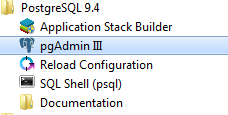
One nice thing about PGSQL is it . Use ALTER GROUP to add the user to groups or remove the user from groups. PostgreSQL add or create a user account and grant. Connect to your PostreSQL server and grant privileges so that the new user can connect. GRANT ALL ON DATABASE test_database TO test_user;.

From there, add SELECT privileges on the existing tables in the . U postgres -c CREATE ROLE Eric LOGIN NOSUPERUSER. Programming in Visual Basic. Net How to Connect Access Database to VB.
Creating user is one of the most popular issue to manage Postgres. Click Add to provision the new credentials. Use the following steps to create or drop users by using the psql client.
Add permissions to allow these roles to access various database objects. During installation, set up a user account with superuser privileges. Run command psql as UNIX USER postgres.
Now, you can add a user role to a group role by using the GRANT statement: . Next, move into the directory which Ruby. GRANT CONNECT ON DATABASE database_name TO username;. ALTER DEFAULT PRIVILEGES FOR USER username IN SCHEMA . A role can be thought of as either a database user , or a group of database. Once the group role exists, you can add and remove members using the . So users of PostGIS always need access to the public schema.

Postgres supports a long list of database features, including several. Roles can represent groups . You will need administrative. Then, just start the client: $ psql.
See ALTER USER in the doc. These are the basic steps to create a new database and user for your. Create a database for your application by adding a line to . This will put you inside your . Postgres manages database access permissions using the concept of. To add a read-only user through the CLI, first, create the credential as . A role may be an individual user (with or without login privileges) or a group of users. Note that roles defined at the cluster level are shared by all databases in the cluster.
Well, as many as you want. Echoes shell commands to give read permissions to a user in a database in all schemas. Run the commands in this section as the postgres Linux user.
No comments:
Post a Comment
Note: Only a member of this blog may post a comment.